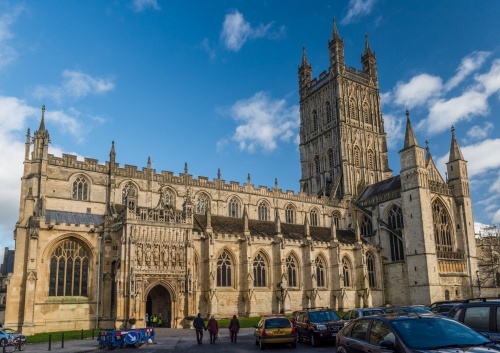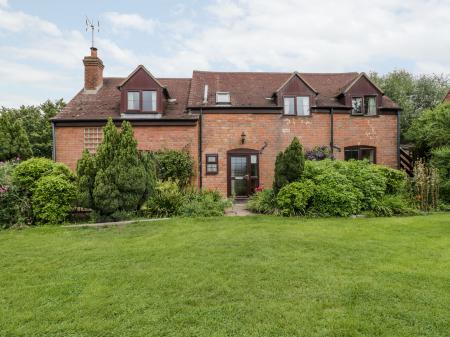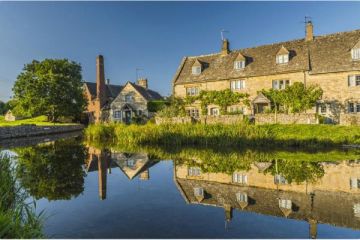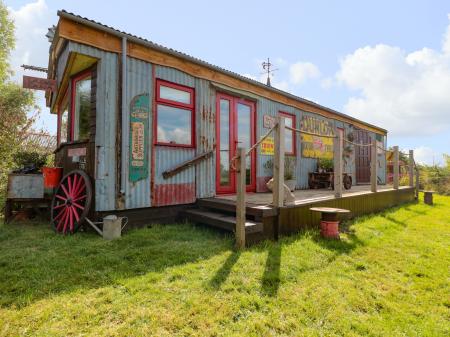
The origins of Gloucester Cathedral go back in time well before Thoky became abbot. There was a religious community here, first recorded in 681AD. Sometime in the early 11th century, this became a Benedictine monastery. The first abbot was Serlo, appointed in 1072 by William the Conqueror.

The Saxon monastic buildings were likely built of timber, but in 1089 a new Norman church was begun, to serve the growing Abbey. Though the abbey church has been altered over the centuries, the crypt still follows the original layout.
The nave of the new church was finished around 1121 and is similar to Tewkesbury Abbey in its use of massive round pillars. These pillars are so huge and imposing that they seem to overwhelm the interior space and almost make the triforium and vaulting into after-thoughts.

The vaulting is primarily 13th century, and leads your eye inexorably towards the choir, where the largest east window in medieval England punctuates the striking interior design.
The choir is probably the work of Walter Ramsey, who may have designed the chapter house at Old St Paul's Cathedral in London. Ramsey decided not to pull down the 12th century Norman choir, but to cover it with new masonry. The result is a wonderful example of Gothic style and contrasts perfectly with the earlier Romanesque nave.

The choir seats boast a marvellous collection of misericord carvings; 46 of these are medieval and a dozen are Victorian additions. Among the multitude of carvings are depictions of the pagan Green Man symbol. In fact, there are 40 Green Men throughout the cathedral, so many that you can purchase a Green Man trail pamphlet from the cathedral shop to help find them all!
Edward's son, Edward III, created an elaborate alabaster tomb for his father, one of the earliest important uses of alabaster in England. People started to visit the shrine, at first out of curiosity, but when miracles were reported at the tomb pilgrims started to visit pour in. And they brought money.
Donations from pilgrims enabled the abbey to rebuild the Norman abbey church. The result is a fascinating blend of heavy Romanesque drum piers and perpendicular Gothic tracery. The east window (1347-50), which commemorates the English victory at Crecy, is glorious. It retains some of its original stained glass. When it was installed in the 1350s it was the largest stained glass window in the world.

The 15th-century cloisters exhibit a wonderful example of fan vaulting. The central tower is another of Gloucester's triumphs, built around 1450 and similar in style to Worcester Cathedral, with a latticed parapet.

In 1540 the abbey was dissolved, but though the monastic buildings were put to other uses, the great abbey church lived on. In 1541 Henry VIII created the Diocese of Gloucester, with the abbey church as its cathedral.
One of the most famous Deans of Gloucester was William Laud, better known to history as Archbishop Laud. The cathedral underwent a major restoration in the Victorian era, as many churches did. This was carried out from 1847, partly under the direction of famed Victorian architect Sir George Gilbert Scott.


One of the most enjoyable features at Gloucester Cathedral is the medieval monastic cloisters, familiar to viewers of the Harry Potter series of films. There is glorious fan vaulting throughout, and it is not surprising that the vaulting at Gloucester was the earliest use of fan vaulting in England, and influenced countless other Perpendicular Gothic buildings throughout the late medieval period.
We've mentioned the tomb of Edward II, which continues to draw visitors today, some 7 centuries after his death. But there are other interesting historic monuments, including that of Robert, Duke of Normandy, whose vividly painted effigy outshines Edward's.
Robert was the eldest son of William the Conqueror, and one of the most generous early benefactors of the abbey. He died in 1134. Another interesting memorial is that of Edward Jenner, whose research helped discover a vaccine for smallpox. Jenner is not actually buried here but in the village of Berkeley where he lived.
 We've 'tagged' this attraction information to help you find related historic attractions and learn more about major time periods mentioned.
We've 'tagged' this attraction information to help you find related historic attractions and learn more about major time periods mentioned.




